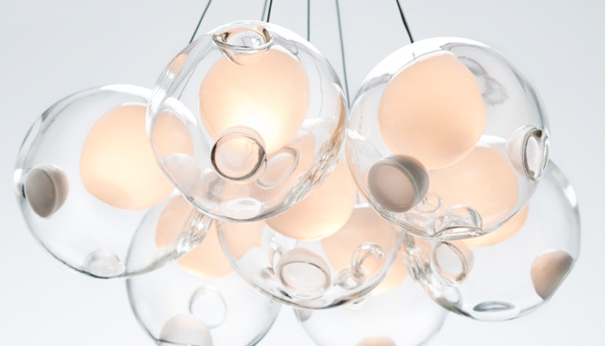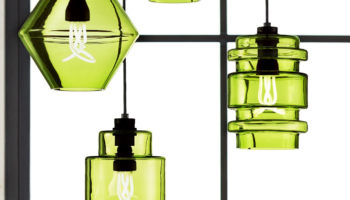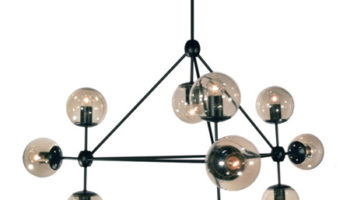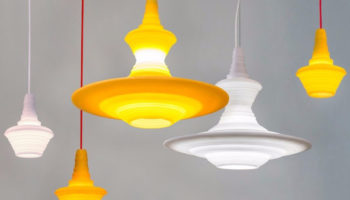Bocci’s 28 Series: Glowing, Amorphous, Planetary
When architects cross over into the field of design, the results tend to be quite interesting, though at times short of practical. That is the number one complaint of engineers: the head-in-the-clouds attitude of those dreamy architects who never consider how something will be built. “What about structural integrity?” the pesky engineers ask. Architect-turned-designer Omer Arbel does his own materials research with the Canadian firm he directs, aptly named Bocci.
28 Series. Designed by Omer Arbel of Bocci.
For those who don’t know, bocci (also spelled bocce) is the European version of bowling, only outside on a narrow dirt field–and involving more mental acuity and physical prowess. It is a deceptive game that causes many sleepless nights for the Italian and French alike. The illusory nature of bocci finds its design parallel in 28. Arbel’s chandelier looks simple, but it hides a complex glass blowing technique “whereby air is intermittently blown in and then sucked out of an intermittently heated and then cooled glass matrix.” This manifold process results in warped globose shapes. Inside the larger sphere are smaller spheres—compromised bubbles (inside one lurks a low-voltage or LED lamp). All of this inflation and deflation calls attention to 28’s principle form: the magnificent orb. In clear, white, or frosted glass, the 28 Chandelier hangs from the ceiling like an unknown meteorological phenomenon. 28 can also be customized: “Bocci’s glass atelier in Vancouver thrives on bespoke work and is able to work with our clients with great versatility on custom colour compositions to match the vision and needs of a project or interior.”


As Creative Director, Arbel revels in his own brand of hybridization: some say that his industrial works “appear to be motivated by larger scale concepts which can only be considered architectural”; others that his “architectural works appear to be inspired by an obsession with the object.” I suspect Arbel doesn’t care to comment on these complaints—except to revel in the ancillary paradox. Like 28, Bocci’s designs hang in limbo, suspended forever betwixt dichotomies: architecture and design, integrity and imperfection, sphere and nebula.




Leave a Reply